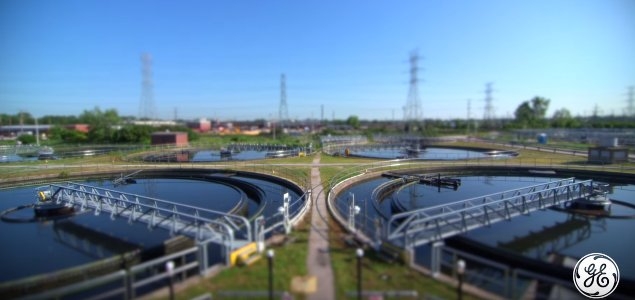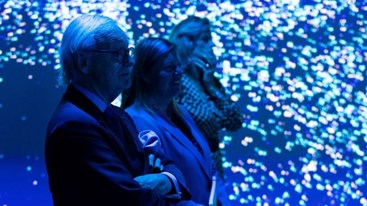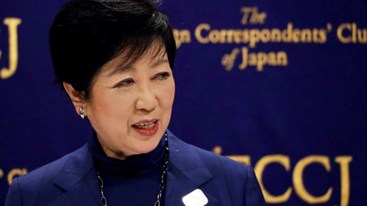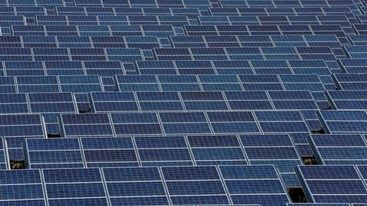Friday, 17/05/2024 | 11:01 GMT+7
GE recently began a demonstration project in Illinois to prove its newest wastewater treatment product can do just that. The company announced today it has several wastewater treatment products that it asserts are energy neutral, the latest being the ZeeLung Membrane Aerated Biofilm Reactor (MABR) — a gas-transfer membrane that diffuses oxygen to a biofilm that grows on the outside surface of the membrane. The microorganisms in the biofilm remove nutrients and organics in the wastewater by metabolizing them in the presence of oxygen. The product is immersed in existing bioreactors to improve performance and capacity of the facility.
GE claims the ZeeLung MABR is four times more energy efficient than the conventional fine-bubble aeration systems many municipalities are currently using. According to GE, aeration for biological treatment typically represents 60 percent of a facility’s power usage. The anaerobic digestion process enhances on-site energy production and can result in the wastewater facility achieving energy neutrality.
“By inventing ZeeLung, GE is creating an opportunity to transform wastewater treatment plants from disposal facilities to resource recovery centers that yield clean water, nutrients and renewable energy from wastewater,” Heiner Markhoff, president and CEO of water and process technologies for GE Power & Water, said in a statement. “This is a game-changing innovation in the pursuit of energy neutrality in the municipal wastewater treatment sector that also addresses the need for facilities to upgrade for nutrient removal and capacity expansion within an existing plant footprint.”

In June, the Metropolitan Water Reclamation District of Greater Chicago (MWRD) commissioned a demonstration of a ZeeLung MABR at its O’Brien Water Reclamation Plant to prove that the product could remove nutrients and reduce the energy required for biological aeration by 40 percent. Modeling has shown that ZeeLung is expected to function even under stressed conditions, such as cold temperature peak events.
“The energy costs for the O'Brien Water Reclamation Plant are $5 million per year. Our aspiration is to become energy neutral by increasing our energy production while decreasing energy consumption. GE’s ZeeLung has the potential to help us achieve this goal,” said Commissioner Mariyana Spyropolous, president of the MWRD Board of Commissioners. “The demonstration of GE’s new ZeeLung MABR may be an innovative way to meet the future regulation for phosphorous removal within the existing footprint while also decreasing the energy demand of the plant.”
Today’s announcement builds on GE’s other initiatives to tackle municipal footprints, including products, research, and a competition around “smart cities.” Earlier this year, GE launched a platform to explore the impact of water reuse on the industrial and municipal sectors, UsedtoUseful.
However, GE is not alone in developing bio-based solutions for wastewater treatment. In fact, a startup formed at Oregon State University, called Waste2Watergy, secured $225,000 in federal funding in February to advance its microbial fuel cell (MFC) system that generates energy from treating wastewater. And researchers from Arizona State University and New Mexico State University are developing an algae-based wastewater treatment method that could prove energy positive.
Mai Linh








.jpg?w=367&h=206&mode=crop) Energy efficiency and conservation usage is an important aspect of the national energy development strategy
05/03/2024
Energy efficiency and conservation usage is an important aspect of the national energy development strategy
05/03/2024
 Challenges and Opportunities to promote energy efficiency market in Vietnam
Challenges and Opportunities to promote energy efficiency market in Vietnam
 The Ministry of Industry and Trade requests government agencies to coordinate in organizing Earth Hour 2024
The Ministry of Industry and Trade requests government agencies to coordinate in organizing Earth Hour 2024
 Consultation on Energy Efficiency Boiler Catalogue and Wood Drying Guideline
Consultation on Energy Efficiency Boiler Catalogue and Wood Drying Guideline
.png?w=367&h=206&mode=crop) Request for expression of interest - C2.1.13: Capacity Building on energy efficiency policies development
Request for expression of interest - C2.1.13: Capacity Building on energy efficiency policies development
 Son Ha Co., Ltd, applies energy efficiency and conservation measures
Son Ha Co., Ltd, applies energy efficiency and conservation measures
 Phuc Kien Co., Ltd., is effectively implementing energy-saving measures
Phuc Kien Co., Ltd., is effectively implementing energy-saving measures
 Request for expression of interest - C2.1.12: Independent monitoring of safeguards implementation
Request for expression of interest - C2.1.12: Independent monitoring of safeguards implementation